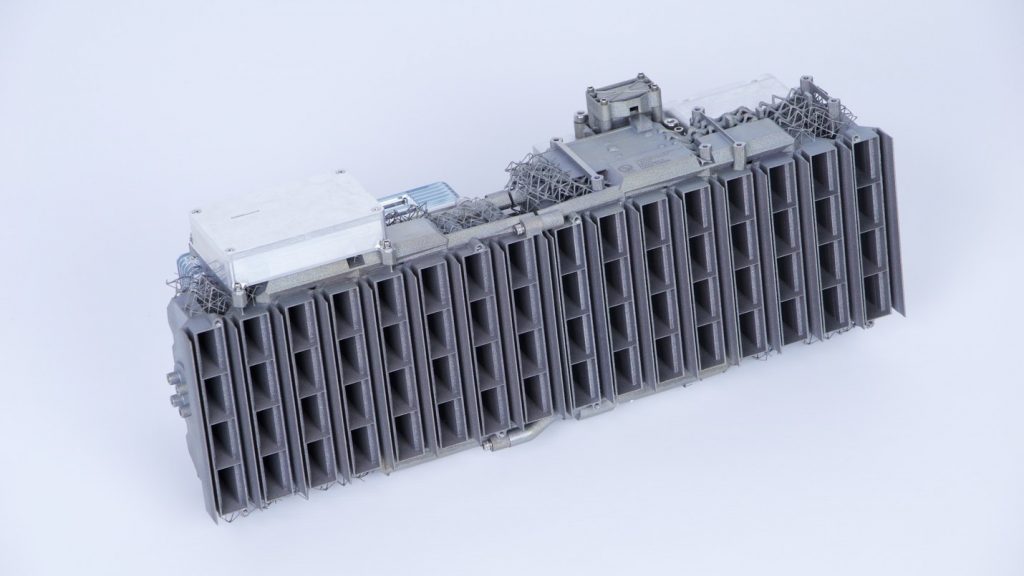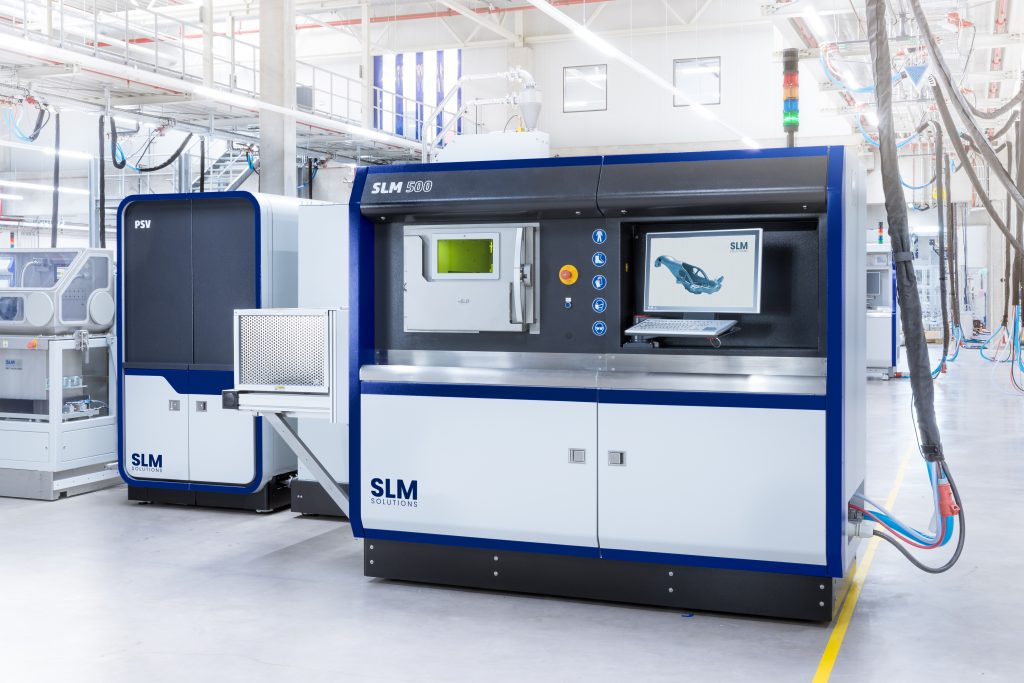Radio Frequency (RF) product developer Optisys has additive manufactured a new generation of space-ready antenna and radar components.
Using an SLM Solutions 3D printer, Optisys has been able to integrate hollow structures into RF parts such as a Ka band tracking antenna for a high-altitude UAV, that make them lighter without reducing their durability. As a result, the firm’s topology-optimized components remain robust enough to survive the rigours of operating in space, while their weight savings could now provide launch cost benefits to their adopters.
“[In space] atomic oxygen in the atmosphere virtually sandblasts the parts. They must also withstand high heat loads and extreme temperature cycling on other planets,” said Janos Opra, CEO of Optisys. “The SLM parts are not only lightweight, but they can also manage harsh conditions, and are particularly robust with excellent performance.”
“We are a company that wouldn’t exist without additive manufacturing.”

Optisys’ 3D printing pedigree
Based in Utah, Optisys is a self-proclaimed designer of “next-gen” RF components that unlock “groundbreaking product performance.” The company’s offering is enabled by its metal 3D printing and simulation-software backed design and production process, through which it claims to be able to reduce the R&D time of antenna systems by up to 90%, and their weight by 99%.
In particular, Optisys says that using additive manufacturing enables it to both build and combine parts within a single production run, allowing it to create new products in 16 weeks and turn around repeat orders in just two weeks, while addressing applications ranging from naval SATCOM parts, to armed vehicle sensors and 5G-ready infrastructure.
In the past, the firm has deployed a 3D printer from the now GE Additive-owned Concept Laser to optimize the design of its components, including a 100-part ‘XSITA’ system which it combined into a single assembly. Now, it appears that Optisys has built on its 3D printing portfolio with the addition of an SLM 500 machine, in an attempt to further expedite its guidance system-focused production workflow.

Optimized antenna production
As a producer of antenna and radar feeds, flat panels and phased arrays, Optisys’ products naturally need to be capable of withstanding the harsh conditions of space. With applications in Low Earth Orbit (LEO) radars and deep space probes, the firm’s parts must also have particularly strong durability and heat-resilience properties, thus it has now adopted an SLM 500 to optimize their performance.
In effect, switching to SLM Solutions’ technology has enabled Optisys to make its products lighter by redesigning them to include internal channels and integrate multiple parts into single components, providing them with weight savings that could help adopters to cut several kilograms from their launch payloads, minimizing their overall costs.
“Additive manufacturing technology ensures we can create the lightest, strongest and best performing RF products available,” explained Opra. “By coupling large aspects of the RF system into single components or repeatable tiles, our customers can reduce weight enormously over competing suppliers. This is of prime importance for many players in the ‘New Space’ market particularly.”
As an added benefit, through acquiring the SLM 500, Optisys is now able to change build cylinders during operation, enabling it to maximize productivity while reducing its own internal costs. Compared to conventional production methods, the company’s 3D printing workflow also allows it to create several components in a single run, thanks to the smart assembly of the platform inside its new machine.
“We are proud that metal-based additive manufacturing is making such an important contribution to space missions,” concluded Sam O’Leary, CEO of SLM Solutions. “This deployment demonstrates how robust the parts produced with SLM technology are. Innovative, top-tier companies such as Optisys continue to drive additive manufacturing forwards and bring it to other planets.”
SLM Solutions’ aerospace ambitions
Alongside the automotive sector, aerospace is one of SLM Solutions’ key target markets, and the company’s technologies have consistently been applied there over the last 12 months. Back in April 2021, the company worked with Safran Landing Systems to 3D print an enhanced piece of large-format business jet landing gear, which weighed 15% less than the original.
Last year, SLM Solutions also partnered with the aerospace division of Honeywell to devise a parameter set for 3D printing aluminum F357. Qualifying the alloy for aircraft production applications could help reduce the manufacturing costs and lead times of the companies’ future parts, while ensuring that they remain compliant with industry standards.
Elsewhere, SLM Solutions recently announced that it has sold five of its NXG XII 600 systems to an unspecified “major European OEM.” Although the firm hasn’t disclosed the identities of its customers, it’s thought highly-likely that they hail either from the automotive or aerospace industries.
To stay up to date with the latest 3D printing news, don’t forget to subscribe to the 3D Printing Industry newsletter or follow us on Twitter or liking our page on Facebook.
For a deeper-dive into additive manufacturing, you can now subscribe to our Youtube channel, featuring discussion, de-briefs and shots of 3D printing in-action.
Are you looking for a job in the additive manufacturing industry? Visit 3D Printing Jobs for a selection of roles in the industry.
Featured image shows a 4×4 Ka-band tracking antenna that was 3D printed using SLM Solutions’ technology. Image via SLM Solutions.


